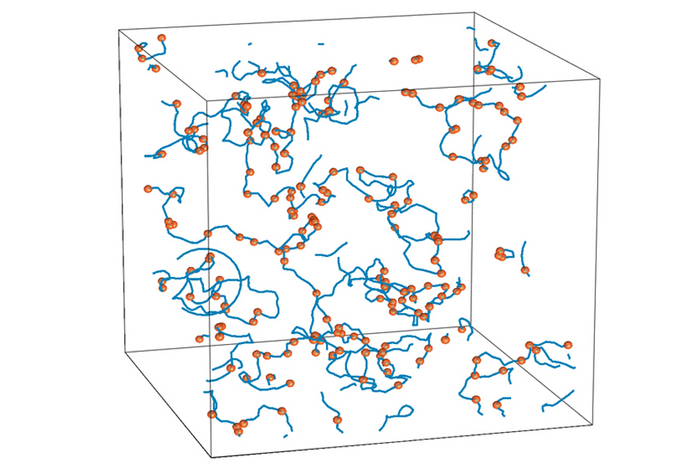An international team of scientists featuring Florida State University researchers has developed a model that predicts the spread of vortices in so-called superfluids, work that provides new insight into the physics that govern turbulence in quantum fluid systems such as superfluid neutron stars.

Credit: Courtesy of Wei Guo/FAMU-FSU College of Engineering
An international team of scientists featuring Florida State University researchers has developed a model that predicts the spread of vortices in so-called superfluids, work that provides new insight into the physics that govern turbulence in quantum fluid systems such as superfluid neutron stars.
In a paper published in Physical Review Letters, the researchers created a model that describes the spread and speed of tornado-like vortex tubes in superfluids. Vortex tubes are a key ingredient of turbulence, which is widely studied in classical physics. The motion of vortex tubes is relevant in a wide range of scenarios, such as the formation of hurricanes, the airborne transmission of viruses and the chemical mixing in star formation. But it is poorly understood in quantum fluids.
This work expands on a previous study that reported experimental results obtained in superfluid helium-4 within a narrow temperature range. Superfluids are liquids that can flow without resistance, and therefore without a loss of kinetic energy. When they are stirred, they form vortices that rotate indefinitely.
“By validating this model and showing that it describes the movement of vortices at a wide range of temperatures, we are confirming a universal rule for this phenomenon,” said Wei Guo, an associate professor of mechanical engineering at the FAMU-FSU College of Engineering. “This discovery may aid the development of advanced theoretical models of quantum fluid turbulence.”
In the previous study, Guo and his team traced the vortex tubes that appeared in superfluid helium-4, a quantum fluid that exists at extremely low temperatures. In that research, the team used tiny particles that were caught in the vortices to trace their movement. They found that the vortices spread out much faster than one would expect based on the tubes’ apparently random motion. This rapid spread is known as superdiffusion.
In the latest work, the researchers built a numerical model and used findings from their previous study to validate the model’s accuracy by reproducing experimental results. That allowed them to predict how vortex tubes might form and spread within superfluids at a wider temperature range. The simulation also produced unequivocal evidence supporting the physical mechanism that the authors proposed for explaining the observed vortex superdiffusion.
Researchers aim to understand turbulence in quantum fluids for the basic research benefits as well as for possible use in practical applications, such as the fabrication of nanowires. Vortex tubes attract particles that group together in incredibly thin lines. Controlling that process allows for manufacture of so-called nanowires, which have a thickness measured in nanometers.
“Particle dispersion in turbulent flow is a very active topic in the classical turbulence field, but it has received less attention in the quantum-fluid community,” said Yuan Tang, a co-lead author and a postdoctoral researcher at the FSU-headquartered National High Magnetic Field Laboratory. “Our work may stimulate more future research on particle dispersion in quantum fluids.”
Paper co-authors include Satoshi Yui and Makoto Tsubota from Osaka Metropolitan University, Japan, and Hiromichi Kobayashi from Keio University, Japan. This paper was selected by Physical Review Letters as an Editors’ Suggestion, a designation for papers that are particularly important, interesting and well written.
This research was supported by the National Science Foundation and the U.S. Department of Energy. Additional resources were provided by the National High Magnetic Field Laboratory at Florida State University, which is supported by the National Science Foundation and the State of Florida. This work was also supported by the Japan Society for the Promotion of Science.
Journal
Physical Review Letters
DOI
10.1103/PhysRevLett.129.025301
Article Title
Universal Anomalous Diffusion of Quantized Vortices in Ultraquantum Turbulence
Article Publication Date
5-Jul-2022




